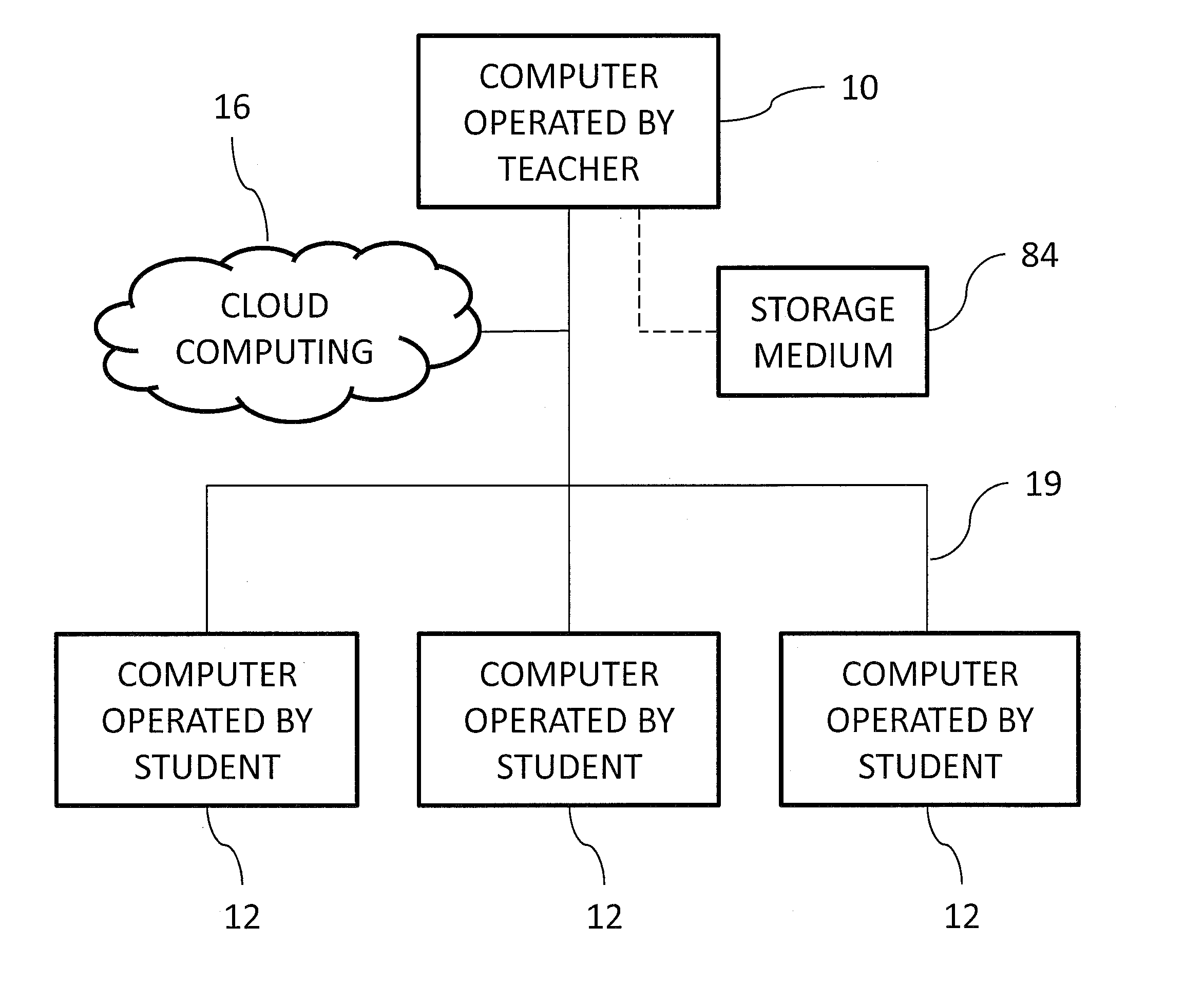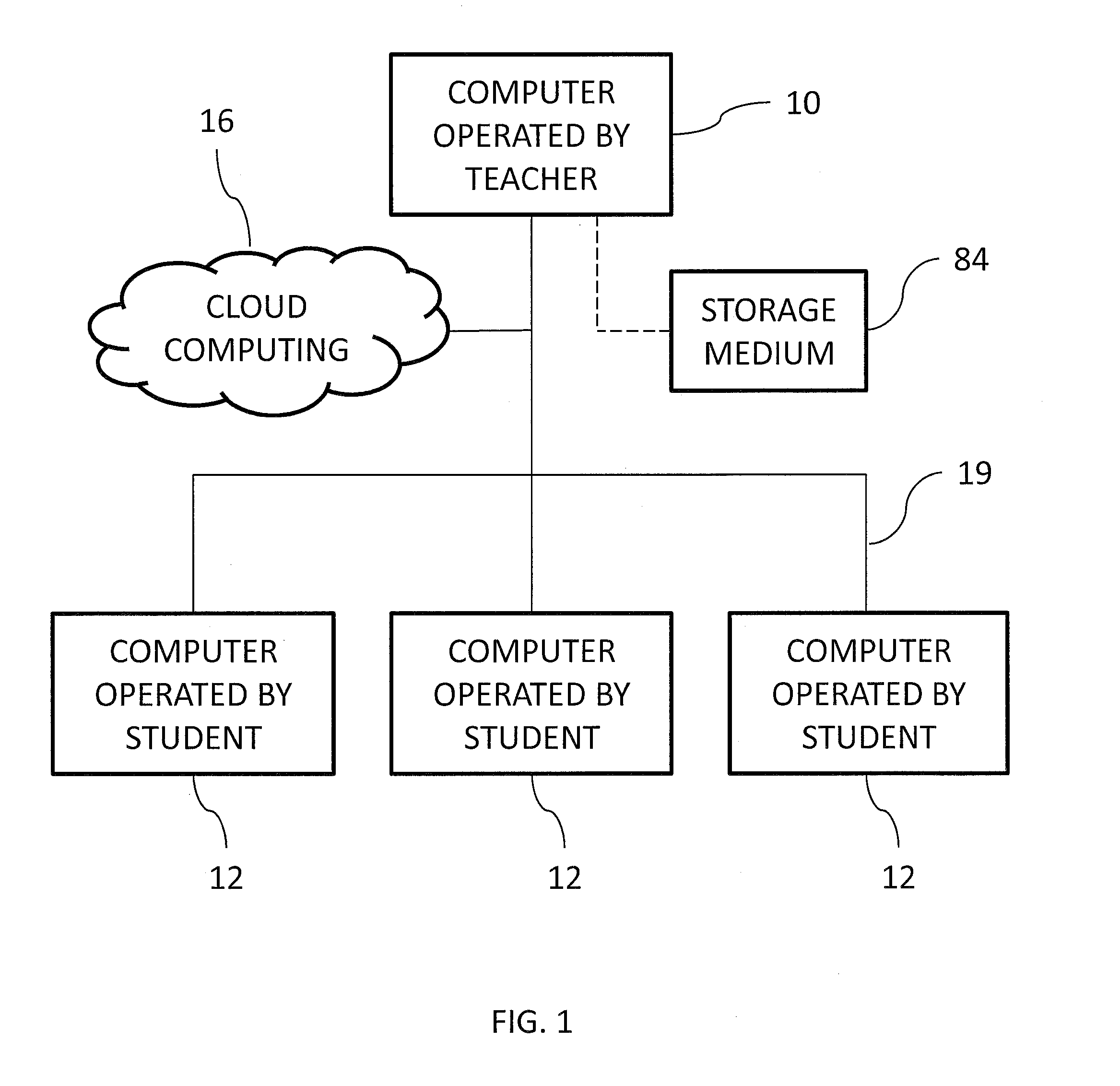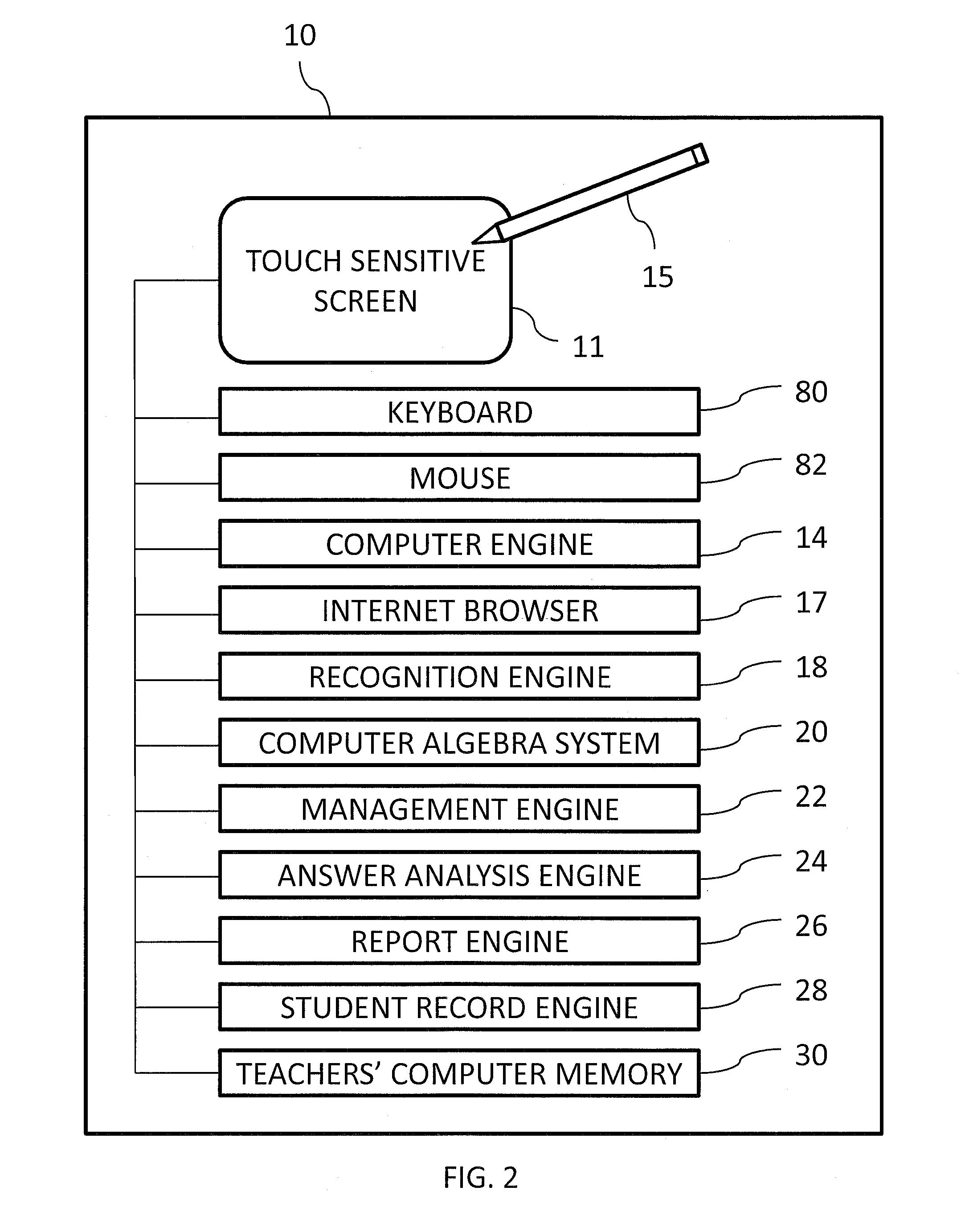Computerized system and method for teaching, learning, and assessing the knowledge of stem principles
- Summary
- Abstract
- Description
- Claims
- Application Information
AI Technical Summary
Benefits of technology
Problems solved by technology
Method used
Image
Examples
Embodiment Construction
[0042]Teaching STEM subjects requires that students learn and understand abstract concepts. Teachers often use example problems and hand sketches to describe these concepts. Educators have found that it is advantageous to use Tablet PCs in combination with software applications which optimize the didactic features of Tablet PCs to teach STEM subjects. With the appropriate software applications, teachers can enter standard math notation and hand-sketched diagrams into the touch sensitive screen of a Tablet PC and have their input viewed by all students in the class via a projector and / or viewed by the students operating their own Tablet PCs networked to the teacher's tablet.
[0043]Those skilled in the art also recognize that, because STEM concepts are abstract, it is important that students be assessed frequently to ensure they understand the principles as they are being taught. The present invention enables teachers to teach STEM principles using pen-enabled computers and to efficien...
PUM
 Login to View More
Login to View More Abstract
Description
Claims
Application Information
 Login to View More
Login to View More - R&D
- Intellectual Property
- Life Sciences
- Materials
- Tech Scout
- Unparalleled Data Quality
- Higher Quality Content
- 60% Fewer Hallucinations
Browse by: Latest US Patents, China's latest patents, Technical Efficacy Thesaurus, Application Domain, Technology Topic, Popular Technical Reports.
© 2025 PatSnap. All rights reserved.Legal|Privacy policy|Modern Slavery Act Transparency Statement|Sitemap|About US| Contact US: help@patsnap.com



